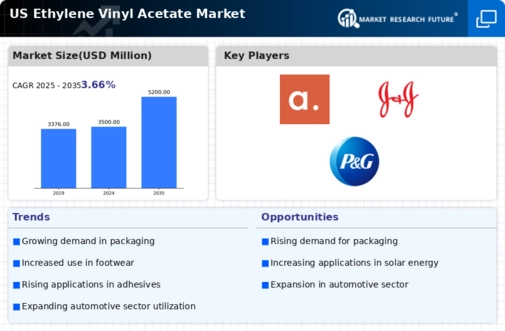The US Ethylene Vinyl Acetate Market has garnered significant attention in recent years due to its versatile applications across various industries such as packaging, automotive, and adhesives. This segment of the chemical industry is characterized by a diverse range of players, varying from large multinational corporations to regional manufacturers, each vying for market share. Competitive insights into this sector reveal the dynamic nature of the market driven by innovation, production capacity, and adaptability to changing consumer demands.
Companies are focusing on enhancing product performance and sustainability factors while addressing environmental regulations to maintain a competitive edge in this rapidly developing sector.Celanese operates as a prominent entity within the US Ethylene Vinyl Acetate Market, exhibiting strong manufacturing capabilities and innovative product development. The company leverages its extensive research and development facilities to produce high-performance EVA grades tailored for specific applications, enabling it to cater effectively to diverse customer needs. Celanese benefits from a well-established distribution network that enhances its market presence and allows for efficient product delivery across the United States.
The company's strategic initiatives, such as collaborations and partnerships within the industry, positions it favorably against competitors in the EVA segment, contributing to its reputation as a reliable and innovative supplier.Mitsui Chemicals holds a strategic position in the US Ethylene Vinyl Acetate Market, focusing on key products and services designed to meet market demands. The company is recognized for its high-quality EVA solutions that are utilized in various applications, including packaging materials and solar cell production. Mitsui Chemicals has demonstrated robust market presence by investing in state-of-the-art manufacturing facilities, allowing it to optimize production efficiency and product consistency.
With an emphasis on sustainability, Mitsui Chemicals actively explores mergers and acquisitions to bolster its capabilities and expand its product portfolio. The company’s strengths lie in its innovative technologies, deep market knowledge, and commitment to customer service, positioning it as a formidable competitor in the US market landscape.














Leave a Comment